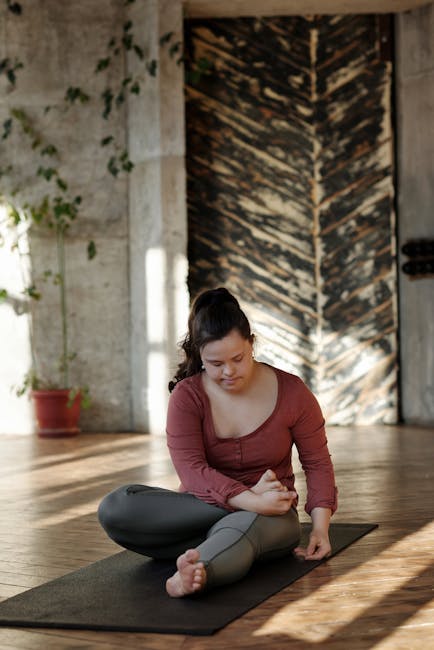
How Barefoot Running Prevents Back Pain
How Barefoot Running Prevents Back Pain
Introduction
Back pain is one of the most common health complaints in modern society, affecting millions of people worldwide. While there are many potential causes—poor posture, sedentary lifestyles, improper lifting techniques—one often overlooked factor is footwear. Traditional running shoes, with their thick cushioning and elevated heels, can alter natural biomechanics, leading to spinal misalignment and chronic discomfort. In contrast, barefoot running promotes a more natural gait, strengthens supportive muscles, and reduces strain on the back. This article explores the science behind barefoot running and how it can help prevent and even alleviate back pain.
The Problem with Traditional Running Shoes
Most conventional running shoes are designed with thick soles, arch support, and heel cushioning, which may seem beneficial at first glance. However, these features can actually interfere with the body’s natural movement patterns.
1. Heel Striking and Spinal Impact
When wearing cushioned shoes, runners tend to land on their heels—a motion known as heel striking. This creates a jarring force that travels up the legs and into the spine, increasing compression on the vertebrae and intervertebral discs. Over time, this repetitive impact can contribute to lower back pain.
2. Altered Posture and Gait Mechanics
Elevated heels in traditional shoes shift the body’s center of gravity forward, forcing the spine into an unnatural curvature. This can lead to poor posture, muscle imbalances, and excessive strain on the lower back. Additionally, rigid arch support weakens the foot’s intrinsic muscles, reducing their ability to absorb shock naturally.
3. Reduced Proprioception
Thick soles diminish sensory feedback from the feet, making it harder for the brain to adjust stride and posture efficiently. This lack of proprioception can lead to awkward movements that place unnecessary stress on the back.
How Barefoot Running Helps Prevent Back Pain
Barefoot running encourages a more natural, efficient movement pattern that reduces strain on the spine. Here’s how:
1. Promotes Forefoot or Midfoot Striking
Without cushioned heels, barefoot runners naturally shift to landing on their forefoot or midfoot. This style of running absorbs shock more effectively through the muscles and tendons of the feet and calves, rather than transmitting force directly to the spine. Studies have shown that forefoot striking reduces peak impact forces by up to 50% compared to heel striking.
2. Strengthens Core and Stabilizing Muscles
Running barefoot engages smaller, often neglected muscles in the feet, ankles, and lower legs. These muscles play a crucial role in maintaining balance and proper alignment. Additionally, a more natural gait activates the core muscles, which support the spine and reduce the risk of back pain.
3. Improves Posture and Spinal Alignment
Without the artificial elevation of traditional shoes, the body naturally aligns itself in a more upright, balanced position. This reduces excessive curvature in the lower back and encourages a neutral spine, decreasing pressure on intervertebral discs.
4. Enhances Proprioception and Movement Efficiency
Barefoot running heightens sensory feedback from the feet, allowing for better stride adjustments and smoother movement patterns. This improved body awareness helps runners avoid awkward, injury-prone motions that could strain the back.
Scientific Evidence Supporting Barefoot Running
Several studies have examined the benefits of barefoot running for spinal health:
- A 2013 study published in Medicine & Science in Sports & Exercise found that barefoot runners exhibited reduced impact forces and lower spinal loading compared to shod runners.
- Research in The Journal of Strength and Conditioning Research demonstrated that transitioning to minimalist footwear improved running mechanics and reduced lower back pain in habitual heel strikers.
- A 2010 Harvard study led by Dr. Daniel Lieberman highlighted that barefoot runners experience fewer repetitive stress injuries, including back pain, due to their altered gait mechanics.
How to Transition to Barefoot Running Safely
While barefoot running offers significant benefits, transitioning too quickly can lead to injuries such as Achilles tendonitis or plantar fasciitis. Follow these steps to adapt safely:
- Start Slowly – Begin with short distances (5-10 minutes) on soft surfaces like grass or sand.
- Strengthen Your Feet – Perform exercises like toe curls, calf raises, and balance drills to prepare your muscles.
- Gradually Increase Distance – Add no more than 10% to your running volume each week.
- Listen to Your Body – If you experience pain beyond normal muscle soreness, reduce intensity or take a break.
- Consider Minimalist Shoes – If fully barefoot running isn’t practical, minimalist shoes with thin, flexible soles can provide a middle ground.
Conclusion
Barefoot running offers a natural, biomechanically efficient way to reduce back pain by promoting proper posture, strengthening supportive muscles, and minimizing spinal impact. While transitioning requires patience, the long-term benefits for spinal health make it a worthwhile consideration for runners and non-runners alike. By embracing a more natural movement pattern, we can alleviate unnecessary strain on our backs and move toward a pain-free, active lifestyle.
Would you like additional tips on barefoot running techniques or specific exercises to support your transition? Let me know how I can expand this further!







